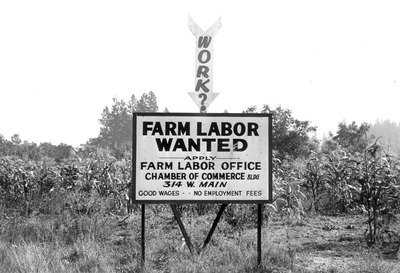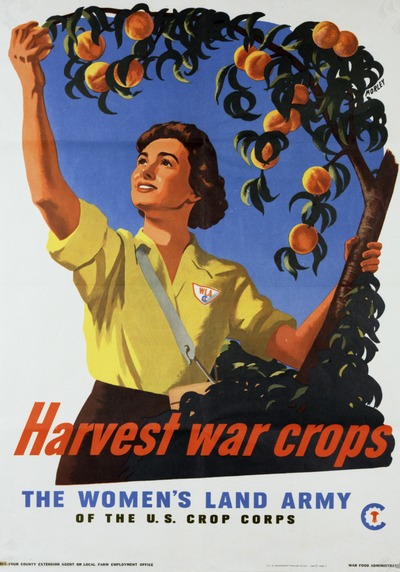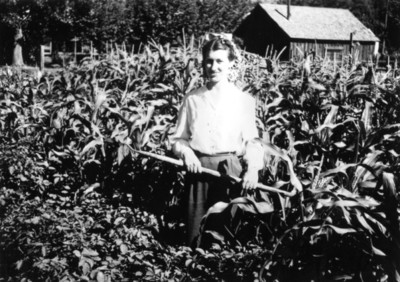When the United States was again called to action in WWII, Extension agents once more played critical roles in the war effort from 1943 to 1947. Farmers were asked to increase production just as the manpower requirements of the war and higher paying jobs in defense industries were greatly reducing the number of farm workers – placing the successful harvest of the nation’s food and fiber supply in jeopardy. Congress passed The Farm Labor Supply Appropriations Act in 1943 to “assist farmers in producing vital food by making labor available at the time and place it is most needed.”
Emergency Farm Labor Service
Oregon’s Emergency Farm Labor Service was established by the Oregon State College Extension Service to oversee labor recruitment, training, and placement. Thousands of workers of all ages were trained and 900,000 were placed on farms and in food processing facilities. Nine farm labor camps were established and managed. Farm laborers included urban youth and women, soldiers, white collar professionals, displaced Japanese-Americans, returning war veterans, workers from other states, migrant workers from Mexico and Jamaica, and even German prisoners-of-war.
For more on the Extension Service’s Farm Labor activities, please visit Fighters on the Farm Front, an online exhibit about Oregon’s Emergency Farm Labor Service.
Fighters on the farm front: a story of the 1943-46 Oregon Emergency Farm Labor Program, 1947
Victory Gardens
To further boost food production during the war, educational materials about cultivation and preservation were distributed through the Victory Garden program. The campaign was initiated at a state Victory Garden Conference which was hosted by the Extension Service at Oregon State College Campus in January of 1942. As a result of the program, there was a 25 percent increase in farm gardens and an estimated 145,000 urban gardens were planted to help ease the food shortage.



